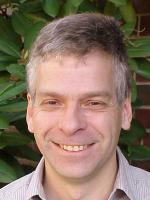
Richard Yuretich has multiple interests in lake sediments, clay minerals, environmental geochemistry , sedimentology and education research. He dabbled in the sciences while pursuing an undergraduate major in German and then did his graduate work in geology at Princeton University, where he studied the modern environment of Lake Turkana in northern Kenya. After receiving his Ph.D., he worked for Gulf Oil Corporation, investigating the mechanisms of petroleum generation in shales. He then taught at the SUNY College in Oneonta before coming to the University of Massachusetts in 1980.His research on lake sediments and their significance for paleoenvironmental interpretation has taken him and his students to various corners of the globe, including Lake Baikal in Siberia, East Africa, Venezuela, the Mojave Desert, and Ellesmere Island in Arctic Canada. A major part of his research involves the geochemistry of natural waters. The interaction of minerals with waters in saline and alkaline lakes is one manifestation of this interest; another is his involvement in many projects investigating the controls on the chemical composition of streams and groundwaters in local Massachusetts communities. He was the Principal Investigator of a large interdisciplinary project studying the natural remediation of acid mine-drainage (AMD) at Davis Mine, a local abandoned sulfide mine: (Biogeochemistry of FeIII and Sulfate Reduction in Extreme Acidic Environments). He has also been involved in efforts to improve the teaching of undergraduate courses and provide better science preparation for prospective K12 teachers. These efforts have been carried out with the support of the National Science Foundation (such as STEMTEC, Science Education Online) and NASA (STEM Earth Central). He STILL like rocks, and enjoys unraveling the paleoenvironment of stratigraphic sequences. Projects along these lines have included a study to constrain the depositional conditions of the Cretaceous Western Interior Seaway of the Rocky Mountain region (in collaboration with Mark Leckie) and examination of Tertiary non-marine environments in the Bighorn Basin of Montana and Wyoming.He has served as Program Director for Geomorphology & Land-Use Dynamics at the National Science Foundation.